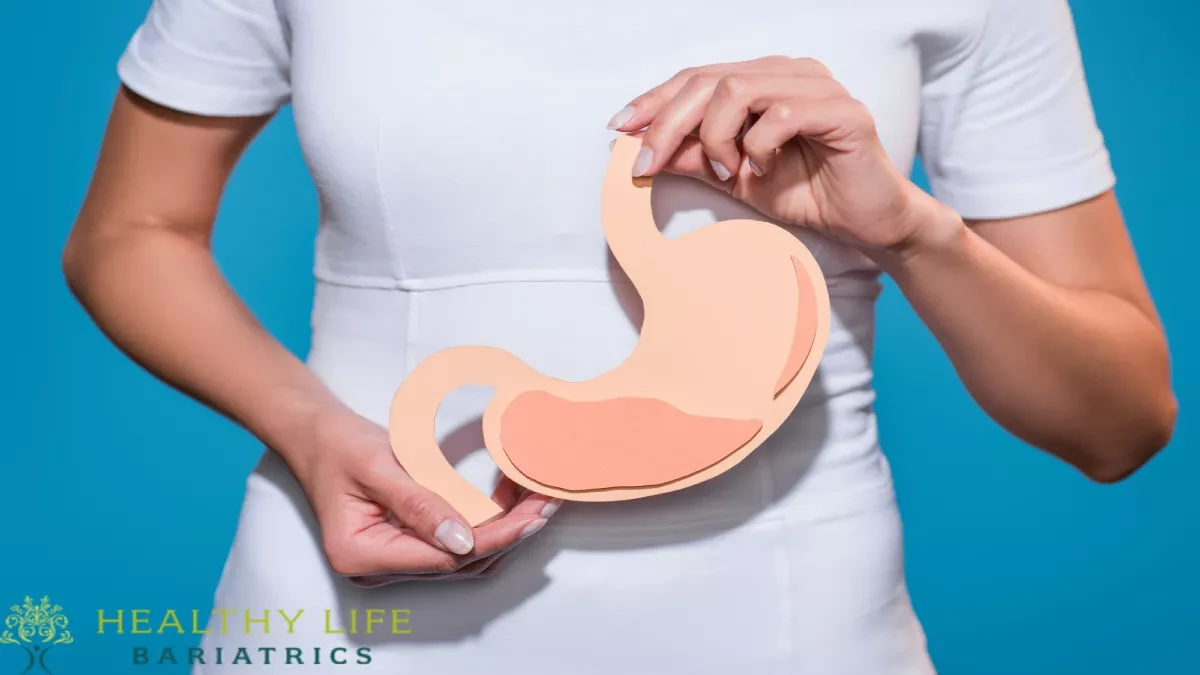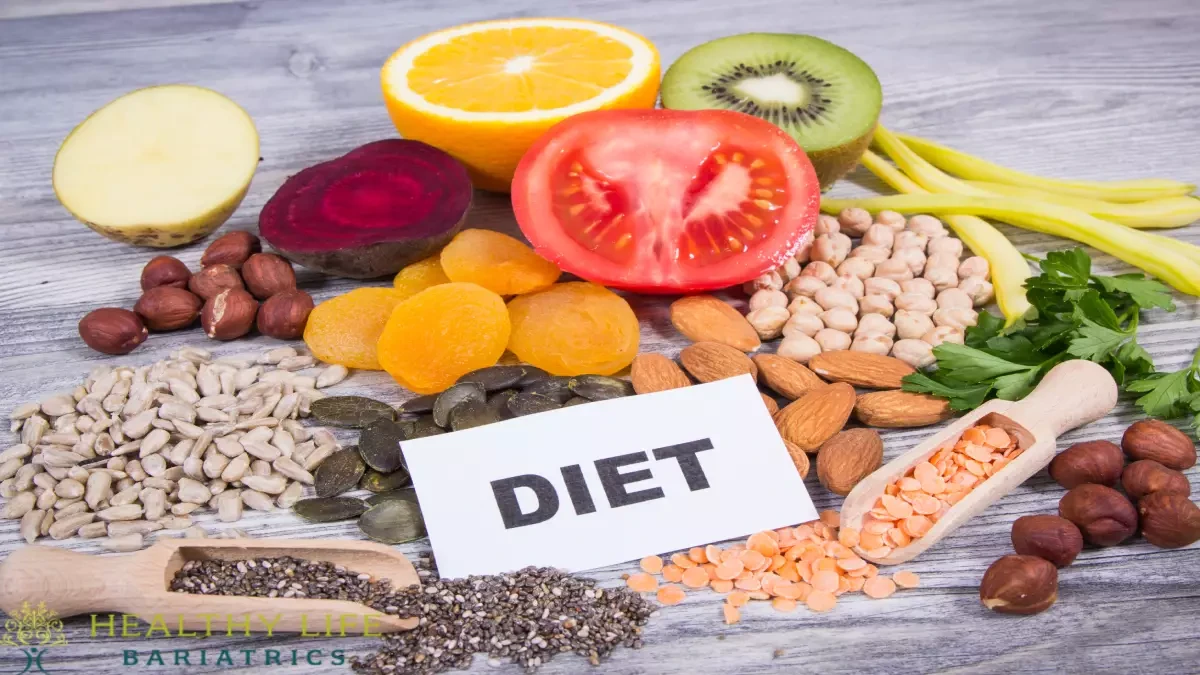VSG surgery, also known as vertical sleeve gastrectomy, is a surgical procedure performed to aid in weight loss for individuals struggling with obesity. The primary purpose of VSG surgery is to reduce the size of the stomach, which limits the amount of food that can be consumed.
During the procedure, the surgeon removes a large portion of the stomach, leaving behind a vertical sleeve-like shape. This new stomach is about the size of a banana, significantly reducing its capacity to hold food. By reducing the stomach's size, VSG surgery restricts the amount of food a person can eat, leading to weight loss.
The benefits of VSG surgery are numerous. Firstly, it allows for substantial weight loss over time, as the reduced stomach size limits calorie intake. This can be especially beneficial for individuals who have struggled with obesity for an extended period and have not found success through diet and exercise alone. Additionally, VSG surgery has been proven to improve or resolve various obesity-related medical conditions, including type 2 diabetes, high blood pressure, and sleep apnea.
It is crucial to consider VSG surgery as a life-changing procedure that requires careful consideration and preparation. Before the surgery, individuals must undergo several evaluations to ensure they are suitable candidates. During the surgery, patients are given general anesthesia, and the procedure lasts approximately one to two hours. After the surgery, a strict post-operative diet plan is followed to aid in successful recovery and weight loss.
In conclusion, VSG surgery, or vertical sleeve gastrectomy, is a procedure that reduces the size of the stomach to aid in weight loss. It is a viable option for individuals struggling with obesity and various associated medical conditions. Before, during, and after the surgery, individuals must be well-informed and prepared for the life-changing effects of VSG surgery.
 vertical sleeve gastrectomy, Los Angeles
vertical sleeve gastrectomy, Los Angeles
Vertical sleeve gastrectomy (VSG) is a surgical procedure that involves removing a large portion of the stomach, resulting in a smaller stomach pouch. This procedure has several potential advantages for individuals seeking to address their weight-related health concerns.
One of the primary advantages of VSG is the reduction of excess body weight. By limiting the capacity of the stomach, individuals experience a decrease in appetite and a feeling of fullness with smaller food portions. This ultimately leads to significant weight loss over time, helping to combat obesity and its associated health risks.
Another advantage of VSG is its minimal invasiveness compared to other weight loss surgery options. The procedure is typically performed laparoscopically, using small incisions and specialized tools. This means a shorter hospital stay, reduced scarring, and quicker recovery compared to more invasive procedures.
Additionally, VSG has a reduced risk of malabsorption. Unlike procedures like gastric bypass, VSG does not involve rerouting the intestines, which can sometimes lead to problems with nutrient absorption. By preserving the natural flow of food through the digestive system, VSG minimizes the risk of malabsorption-related complications.
Improved self-esteem and confidence are also common benefits of VSG surgery. As excess weight is shed and overall health improves, individuals often experience a positive change in body image and increased self-confidence. This can have a profound impact on mental well-being and overall quality of life.
Lastly, VSG surgery offers an overall improvement in general health. Weight loss resulting from VSG can lead to a reduction in obesity-related health conditions such as high blood pressure, diabetes, sleep apnea, and joint problems. By addressing these health concerns, individuals can experience an improvement in their overall well-being and quality of life.
In summary, the possible advantages of VSG surgery include a reduction of excess body weight, minimal invasiveness, reduced risk of malabsorption, improved self-esteem and confidence, and an overall improvement in general health.
Vertical sleeve gastrectomy (VSG) surgery is a popular and effective weight loss procedure. However, like any surgical intervention, it comes with possible disadvantages and risks that patients should be aware of before making their decision.
One potential disadvantage of VSG surgery is the risk of hernia. The pressure exerted on the abdominal wall during the operation may weaken it, causing the intestines or other organs to protrude through the weakened area. This can require further surgical intervention to repair.
Infection is another possible risk associated with VSG surgery. Any surgical procedure carries the risk of infection, and in the case of VSG surgery, it can occur in the incision site or within the abdomen itself. Proper hygiene and post-operative care are crucial to minimize this risk.
Acid reflux is a common side effect of VSG surgery. By reducing the size of the stomach, VSG surgery changes the dynamics of the gastrointestinal tract, which can lead to increased acid production and reflux symptoms, such as heartburn and regurgitation.
Blood clots are a concern during and after surgery. Inactivity during the recovery period can increase the risk of developing blood clots, particularly in the legs. These clots can potentially travel to the lungs and cause a life-threatening condition known as pulmonary embolism.
Weight regain is another possible disadvantage of VSG surgery. While the procedure initially leads to significant weight loss, some patients may experience weight regain over time. This can occur due to the stretching of the remaining stomach or changes in eating habits.
Other risks associated with VSG surgery include internal bleeding, staple line leakage, and adverse reactions to anesthesia. These risks are relatively rare but can have serious consequences if they occur.
It is essential for individuals considering VSG surgery to thoroughly discuss the possible disadvantages and risks with their healthcare provider to make an informed decision.
 vertical sleeve gastrectomy, Los Angeles Dr. Moein
vertical sleeve gastrectomy, Los Angeles Dr. Moein
The cost of vertical sleeve gastrectomy (VSG) surgery can vary depending on several factors. These factors include the location, the surgeon's experience and reputation, the facility where the surgery is performed, and any additional services or support provided as part of the overall package.
In the United States, VSG surgery is generally more expensive compared to Canada and Mexico. The cost range for VSG surgery in the US can vary from $10,000 to $25,000 or even higher, depending on the factors mentioned earlier.
In Canada, the cost range for VSG surgery is typically between $9,000 and $15,000. This price difference can be attributed to various factors, such as the healthcare system and the availability of specialized facilities and surgeons.
Mexico has gained popularity as a medical tourism destination due to its lower healthcare costs. The average cost range for VSG surgery in Mexico is around $5,000 to $8,000. It is important to note that while the cost may be lower, it is crucial to thoroughly research and choose a reputable and experienced surgeon and facility.
Insurance coverage can greatly impact the out-of-pocket cost of VSG surgery. Some insurance plans cover a portion or all of the expenses, while others may not offer coverage for weight loss surgeries. It is essential to review insurance policies carefully and consult with the insurance provider to determine coverage options and potential costs.
In conclusion, the cost of VSG surgery varies depending on various factors, with the US generally having higher costs compared to Canada and Mexico. Understanding insurance coverage is crucial as it can greatly impact the out-of-pocket expenses associated with VSG surgery.
Vertical sleeve gastrectomy (VSG) surgery is a weight loss procedure that involves reducing the size of the stomach to promote weight loss. The surgery is performed under general anesthesia, which ensures the patient's comfort and safety throughout the procedure.
To begin the surgery, the surgeon creates several small incisions in the abdominal wall. These incisions serve as access points for the surgical instruments. The surgeon then inserts a Bougie tube into the stomach. This tube helps measure the desired size of the new stomach by serving as a guide during the surgery.
Using specialized stapling devices, the surgeon applies staples to divide the stomach vertically, creating a smaller stomach pouch. The larger portion of the stomach is then removed, leaving the newly formed stomach pouch intact. The removal of the larger portion of the stomach reduces the production of hunger hormones, helping individuals feel less hungry.
Finally, the surgeon closes the incisions with dissolvable sutures or surgical tape. This ensures a smooth and quick healing process, with minimal scarring. After the surgery, patients are monitored closely in the recovery area before being moved to a hospital room.
In conclusion, VSG surgery involves the use of general anesthesia, the placement of small incisions in the abdominal wall, the insertion of a Bougie tube to measure the desired size of the new stomach, the application of staples to create a smaller stomach, the removal of the larger portion of the stomach, and the closure of the incisions.
 vertical sleeve gastrectomy, LA, CA
vertical sleeve gastrectomy, LA, CA
After VSG surgery, the recovery process is crucial for successful weight loss and overall health improvement. Along with the surgical procedure, a recommended diet plan is essential to ensure optimal healing and long-term success.
The post-op diet is divided into several stages, starting with a liquid-only phase immediately after surgery. This stage typically lasts for about 1-2 weeks, during which clear liquids, such as broth, sugar-free gelatin, and protein shakes, are consumed. The next stage is the pureed food phase, lasting around 2-4 weeks. Pureed foods, such as mashed vegetables, blended soups, and soft protein sources like cottage cheese or tofu, are gradually introduced.
After the pureed food phase, a transition to soft foods begins. This stage can last for about 4-6 weeks, including foods like eggs, soft fruits, canned fish, and well-cooked vegetables. Finally, solid foods are introduced, typically around 8-12 weeks post-surgery. In this stage, foods that can be easily chewed and digested, like lean meats, whole grain breads, and cooked vegetables, can be consumed.
Following the post-op diet and dietary guidelines is essential for proper healing, maintaining weight loss, and preventing complications. Failure to comply with the recommended diet can result in discomfort, nutrient deficiencies, and potential risks such as dumping syndrome, where undigested food rapidly enters the small intestine.
Key foods to include in each stage of the post-op diet include protein-rich foods like lean meats, eggs, and dairy products. Additionally, incorporating fruits, vegetables, and whole grains ensure adequate vitamin and mineral intake. Conversely, high-calorie, sugary, and fatty foods should be avoided as they can hinder weight loss progress and lead to complications.
In conclusion, the recovery process after VSG surgery is directly influenced by the recommended diet. Following the staged post-op diet, adhering to dietary guidelines, and consuming key foods while avoiding the ones that may pose risks are essential for a successful outcome and a healthier life.
In conclusion, VSG surgery, also known as Vertical Sleeve Gastrectomy, is a highly effective procedure designed to promote weight loss in individuals struggling with obesity. Throughout this article, we have explored the background information on VSG surgery, understanding its purpose and potential benefits.
Key takeaways from the background information include the fact that VSG surgery aims to change the size of the stomach. This is achieved by removing a large portion of the stomach, creating a smaller sleeve-like shape. By reducing the size of the stomach, VSG restricts the amount of food that can be consumed, leading to a decreased calorie intake.
The benefits of VSG surgery are numerous. One major advantage is a reduction in cravings. With a smaller stomach, individuals may experience a decreased appetite and feel satisfied with smaller portion sizes. This can greatly aid in weight loss efforts.
Additionally, VSG surgery has been shown to decrease the risk of complications related to obesity, such as cardiovascular diseases and type 2 diabetes. By achieving and maintaining a healthier weight, individuals may improve their overall health and quality of life.
In summary, VSG surgery is a highly effective approach for weight loss promotion. By altering the size of the stomach, it helps individuals consume fewer calories and experience reduced cravings. Furthermore, it offers the potential to decrease the risk of complications associated with obesity.